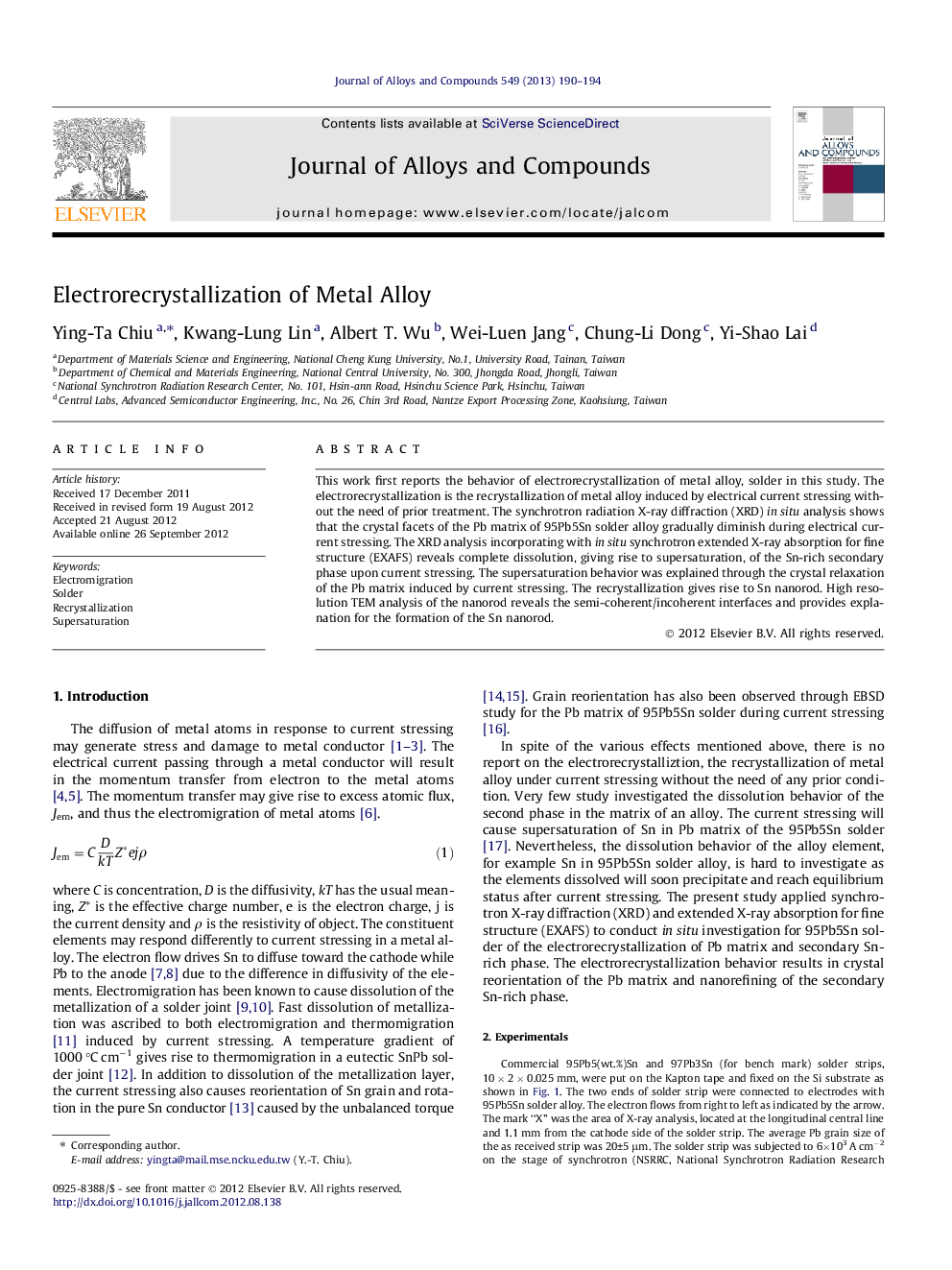| Article ID | Journal | Published Year | Pages | File Type |
|---|---|---|---|---|
| 1615165 | Journal of Alloys and Compounds | 2013 | 5 Pages |
This work first reports the behavior of electrorecrystallization of metal alloy, solder in this study. The electrorecrystallization is the recrystallization of metal alloy induced by electrical current stressing without the need of prior treatment. The synchrotron radiation X-ray diffraction (XRD) in situ analysis shows that the crystal facets of the Pb matrix of 95Pb5Sn solder alloy gradually diminish during electrical current stressing. The XRD analysis incorporating with in situ synchrotron extended X-ray absorption for fine structure (EXAFS) reveals complete dissolution, giving rise to supersaturation, of the Sn-rich secondary phase upon current stressing. The supersaturation behavior was explained through the crystal relaxation of the Pb matrix induced by current stressing. The recrystallization gives rise to Sn nanorod. High resolution TEM analysis of the nanorod reveals the semi-coherent/incoherent interfaces and provides explanation for the formation of the Sn nanorod.
► The In situ investigation of 95Pb5Sn solder with SEM, synchrotron XRD and extended X-ray absorption for fine structure (EXAFS) under current stressing shows that electrical current tends to diminish the crystalline structures of the Sn-rich phase and the Pb-rich matrix. ► The diminishing of Sn-rich phase is believed to yield supersaturation which further induces recrystallization. The recrystallization, induced by electrical current stressing, is refered as electrorecrystallization which forms nanorod Sn-rich phase. ► The Pb-rich matrix also recrystallizes when the electrical current is released.
